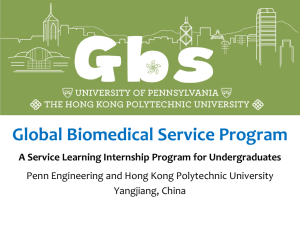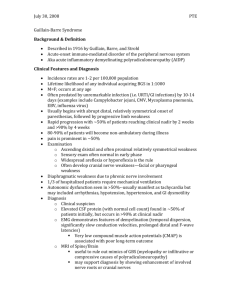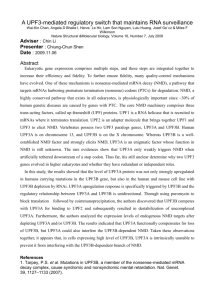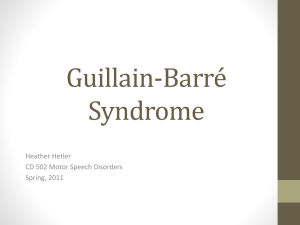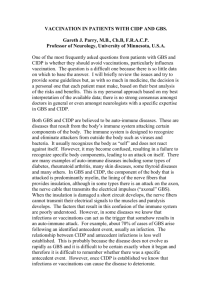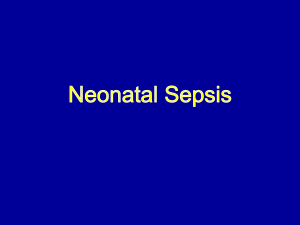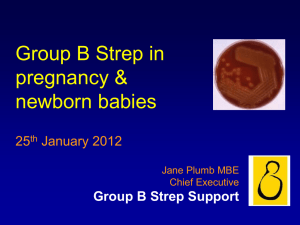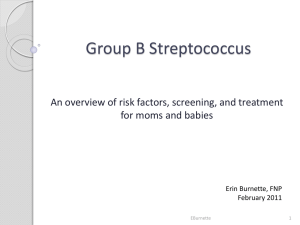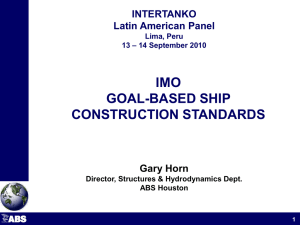Diagnosing Neuromuscular Disease
advertisement
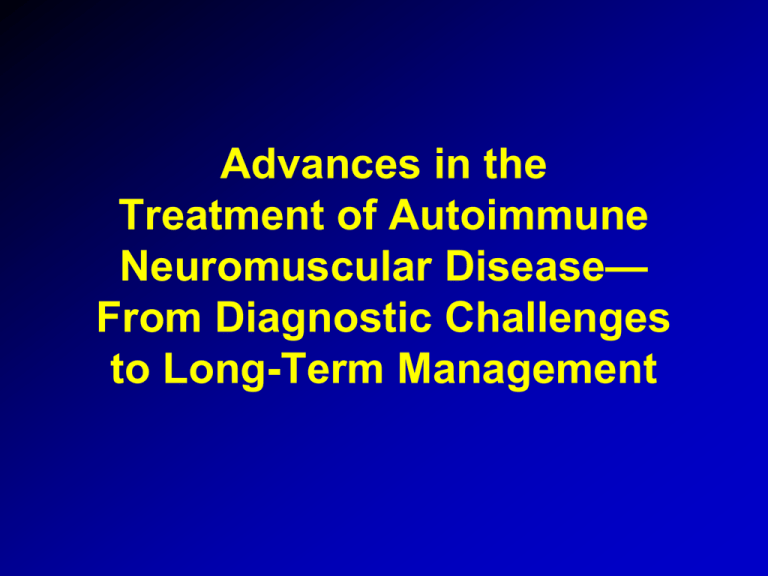
Advances in the Treatment of Autoimmune Neuromuscular Disease— From Diagnostic Challenges to Long-Term Management Faculty Chairperson Gil I. Wolfe, MD Professor and Chief of the Neuromuscular Section Department of Neurology University of Texas Southwestern Medical Center University of Texas Southwestern Hospital Dallas, Texas Erik R. Ensrud, MD Gregory T. Carter, MD, MS Board certified in PM&R/EMG/Neurology/ Neuromuscular Disease Director, Neuromuscular Center and EMG Laboratory VA Boston Healthcare System Associate Neurologist Brigham and Women’s Hospital Boston, Massachusetts Clinical Professor of Physical Medicine and Rehabilitation and of Neuromuscular Medicine University of California Davis Sacramento, California Medical Director Regional Neuromuscular Center Providence St. Peter Hospital Olympia, Washington Topics Diagnostic criteria for autoimmune neuromuscular diseases (NMD) Making treatment decisions—using experience, exploring the evidence Role of rehabilitation in autoimmune NMD Objectives On completion of this activity, participants should be able to: Recognize the clinical presentations and key diagnostic features of autoimmune NMD Select appropriate therapies and recognize potential treatment failures on the basis of patient history and available clinical evidence Determine appropriate timing, dosage, and duration of therapies used in the treatment of autoimmune NMD Recognize the long-term implications of NMD and become proficient in applying appropriate rehabilitative strategies Guillain-Barré Syndrome (GBS) Acquired Inflammatory Demyelinating Polyneuropathy (AIDP) Typical GBS—monophasic immune attack +\- Prodromal infection Rapidly evolving weakness—variable degree Initial paresthesias, sensory loss Areflexia Pathology-segmental demyelination arohn RJ, Saperstein DS. Semin Neurol.1998;18:49-61. Prodromal Aspects 2/3 of patients report a prodromal event or symptoms 1 to 4 weeks before onset of weakness 28% gastroenteritis 18% URI Surgery CIDP Chronic Inflammatory Demyelinating Polyneuropathy Dyck at Mayo Clinic, 1975 Acquired neuropathy that shares a similar pathology and autoimmune etiology with GBS Different from GBS Usually, but not always, in the manner of presentation Natural history of the disease Rarely associated with antecedent infection Responds to prednisone Peak incidence at 40–60 yrs old Dyck PJ et al. Mayo Clin Proc. 1975;50:621-637; Burns T, Ensrud E. (Producers). (17 Aug 2007). “Chronic inflammatory polyradiculoneuropathy with Peter J. Dyck, MD” Available at: http://beta.aanem.org/Education/Products/PhyPodcasts.aspx?page=3&fileid=355. Typical CIDP Slow onset of progressive symmetric muscle weakness Both proximal and distal weakness Progresses for >2 months; may be relapsing-remitting ~60% slowly progressive course ~35% relapsing-remitting Sensory loss less prominent than weakness; paresthesias and numbness, but rarely significant pain Large-fiber sensory modalities are more affected Diffuse decreased or absent reflexes 3%–5% have evidence of CNS demyelination Pathology Multifocal demyelination No vasculitic changes Sural nerve biopsy is rarely necessary The Triad of GBS Diagnosis* Clinical picture, syndrome CSF EMG findings * Preferably 2 of 3 consistent with GBS before treatment is initiated Ensrud ER, Krivickas LS. Phys Med Rehabil Clin N Am. 2001:12:321-334. Electrophysiology Dependent on subtype Crucial to maintain and record adequate temperature Findings of demyelination, axonal loss, or both, especially with a prolonged course Alberti MA et al. J Peripher Nerv Syst. 2011;16:136-142. AIDP • Prolonged distal motor and F-wave (early) • • • • latencies Absent or impersistent F-waves Slowing of CV and/or conduction block Reduction of CMAPs +/- temporal dispersion Abnormal or absent median SNAP + normal sural SNAP (AMNS) 39% Alberti MA et al. J Peripher Nerv Syst. 2011;16:136-142. Very Early EDX Findings in GBS (Within 4 Days of Clinical Onset) • • • • Abnormally late responses in 77% Prolonged distal motor latency in 55% Cranial nerve study abnormality in 44% Motor nerve conduction velocity slowing in 23% Alberti MA et al. J Peripher Nerv Syst. 2011;16:136-142. CIDP—Diagnosis* Exam, symptoms CSF EMG *At least 2 of 3 before treatment CIDP—CSF/Serum CSF is very important in diagnosis Elevated (>45mg/dl) in 94% of patients, average 135 CSF protein level is very sensitive! 90% of patients have CSF cell count WBC <5 ~ 25% with this phenotype have monoclonal gammopathy; check serum SPEP/IFX for a monoclonal spike Commercial serum antibodies are rarely needed Barohn RJ et al. Arch Neurol. 1989;46:878-884. CIDP—Electrophysiology Complex topic Need to study multiple nerves, “MS of PNS” Correct temperature (>32.00C) is crucial NCS shows electrophysiologic evidence of demyelination Distal motor latency >125% normal Conduction velocity <70% normal (<80% if CMAP amp ≥80% normal) Conduction block Temporal dispersion Needle EMG tends to show more prominent reinnervation changes than acute denervation changes, consistent with slow temporal nature of pathology EMG may look axonal because of secondary axonal damage Barohn RJ, Saperstein DS. Semin Neurol .1998;18:49-61. GBS—Early Recognition of Poor Prognosis A recent paper looked at 397 GBS patients Which patients were unable to walk at 4 weeks, 3 months, and 6 months? Three important factors Older age (>60) Preceding diarrhea MRC scores averaged 3 or less when the following were tested: • • Shoulder abd/elb flexion/wrist ext hip flexion/knee ext/ankle dorsiflexion MRC scores were most predictive at 7 days after admission Walgaard C et al. Neurology. 2011;76:968-975. CIDP With Acute Onset (A-CIDP) 170 patients with GBS 1-year follow-up Treatment–related fluctuation (TRF) in GBS always occurred within 8 weeks of symptom onset Always 1 or at the most 2 TRFs Consider A-CIDP when a patient thought to have AIDP/GBS deteriorates 8 weeks from onset or has 3 or more TRFs Start maintenance therapy for CIDP when A-CIDP is recognized Ruts L et al. Neurology. 2010;74:1680-1696; Ensrud E. (Producer). (25 May 2010). “Distinguishing acute-onset CIDP from fluctuating Guillain-Barré syndrome : a prospective study “ with Dr. Pieter van Doorn. Available at: http://www.aan.com/rss/?event=feed&channel=1. A-CIDP—Recommendations for Identification or Appropriate Treatment When a GBS patient is discharged from an acute hospital, always schedule an 8-week outpatient follow-up appointment In acute rehab, document a full motor and sensory exam on admission and every week subsequently until the patient is discharged from rehab Consider differential diagnoses in this setting Eg, a second condition such as steroid myopathy TRF of GBS Note: Unrecognized A-CIDP can result in irreversible axonal loss permanent loss of function including quadriplegia GBS—Rehabilitative Strategies ICU setting • Passive ROM, prevent joint contracture • Active assisted ROM as tolerated • Close monitoring Medical-surgical setting • Increase intervention • Isometric exercises while the patient is nonambulatory (Delorme technique) • Physical therapy CIDP Evidence-based treatments Prednisone: 60–100 mg per day, followed by taper IVIG: 2 g/kg as induction therapy Plasma exchange 5–6 treatments Hughes RA et al. Cochrane Database Syst Rev. 2004;(4):CD003280. Mehndiratta MM et al. Cochrane Database Syst Rev. 2004;(3):CD003906. van Schaik IN et al. Cochrane Database Syst Rev. 2002;(2):CD001797. MG—Routine Diagnostic Work-up Repetitive nerve testing (3 Hz) U-shaped decrement Reproducible Partially repairable Anti-acetylcholine receptor antibodies (IgG) Anti–muscle-specific tyrosine kinase (anti-MUSK) antibodies Chest CT to look for thymoma Autoimmune NMD— Rehabilitative Strategies MG patients who are adequately medicated may have minimal rehabilitative needs During an acute crisis, passive limb exercises lower the risk of deep vein thrombosis (DVT) DVT prophylaxis is recommended Bulbar dysfunction increases the risk of aspiration MG—Treatment Anticholinesterase agents (pyridostigmine) for symptomatic relief Corticosteroids Immunosuppressants for steroid-sparing effect (azathioprine, mycophenolate mofetil, cyclosporine, tacrolimus, rituximab) Plasma exchange or IVIG for a crisis; before thymectomy; for severe exacerbations; or in refractory patients IVIG is more accessible Plasma exchange may work faster Thymectomy Removal of thymoma Thymectomy is a treatment option in nonthymomatous MG1 1. Gronseth GS, Barohn RJ. Neurology. 2000;55:7-15. Summary of Consensus Statements IVIG • Myasthenia gravis—Level A Acute exacerbations1,2 Short-term Rx for severe disease1 Plasmapheresis • Myasthenia gravis—Level U Myasthenic crisis3 Prethymectomy “Plasmapheresis is used at many medical centers for these indications”3 Corticosteroids • Myasthenia gravis4,5—Experience-based 1. Elovaara I et al. Eur J Neurol. 2008;15:893-908. 2. Donofrio PD et al. Muscle Nerve. 2009;40:890-900. 3. Cortese et al. Neurology. 2011;76:294-300. 4. Evoli A et al. Eur Neurol. 1992;32:37-43. 5. Pascuzzi RM et al. Ann Neurol. 1984;15:291-298. MG─Long-Term Azathioprine Treatment n=23 Outcomes All improved Clinical grade 3 or 4 initially (moderate to severe weakness) Clinical grade 1 or 2 at last observation (no or mild weakness) 2 patients discontinued azathioprine after full remission Mean prednisolone dose fell to 5 mg/d Side effects No patients with WBC <2.5 No opportunistic infections Fonseca V et al. Postgrad Med J. 1990;66:102-105. MG─Long-Term Use of Cyclosporine N=39, randomized to cyclosporine (5 mg/kg per body weight in divided doses) or placebo After 6 months Treatment group had significantly greater improvement in strength (p=0.004) and a reduction in anti-Ach receptor antibody titer (p=0.01) Percentage reduction of steroid medication was greater in the cyclosporine group, although the difference was not statistically significant (p=0.12) No significant nephrotoxicity was noted at this dosage during the first 6 months 55% of patients no longer on cyclosporine at 36 months Nephrotoxicity Headache Psychiatric symptoms GI intolerance Infection Tindall RSA et al. Ann NY Acad Sci. 1993;681:539-551. MG─Long-Term Use of Tacrolimus MGFA PIS 25 Total (n=212) Without thymoma (n=149) Average Value 20 With thymoma (n=63) 15 13.7% complete, stable remission 73.8% pharmacologic remission 5.4% minimal manifestation Prednisone withdrawn in 95% 10 5 1.9 * 0.6 * 0.4 * 0 0.3 * Baseline Month 3 Month 6 Month 9 Month 12 QMG scores over time *p<0.05 0.2 * Final Favorable response irrespective of thymectomy or thymoma 4.9% discontinued because of AEs Adapted from: Ponseti JM et al. Ann NY Acad Sci. 2008;1132:254. MG─Treatment and Outcomes n=470, 19 tertiary centers 90 80 70 % percent 60 50 40 30 20 10 0 Thymectomy Steroids Other IS Anti-AchE Outcomes (mean follow-up 8 years; minimum 1 yr) • Remission 30% • Ocular 35% • Generalized 35% (only 4% with moderate-to-severe disability) • MGFA 0-II increased from 78.7% to 96.7% (p<0.01) IS=immunosuppressant; Anti-AchE=cholinesterase inhibitor; MGFA=Myasthenia Gravis Foundation of America. Adapted from Kawaguchi N et al. J Neurol Sci 2004;224:43. MG─Treatment and Outcomes (cont) Adapted from Grob D et al. Muscle Nerve. 2008;37:141. MG—Selection of Steroid–Sparing Agents Azathioprine (may be used in conjunction with prednisone) At least 1 year to see a full effect Often seen—an increase of at least 10 from baseline MCV in CBC in responders Mycophenolate Tacrolimus GBS—Treatment of Pain • Almost 90% of GBS patients experience pain • 66% have very severe pain • Gabapentin or pregabalin • Tricyclic antidepressants • Opioid analgesics GBS—BiPAP for Respiratory Support Respiratory failure is a significant cause of morbidity and mortality in GBS 33% of GBS patients require intubation Average time to intubation is 7 days after symptom onset Little clinical experience with BiPAP in GBS (used more commonly in MG) GBS—Rehabilitative Approach to Pain Management Topical agents (capsaicin, lidocaine gel) Desensitization techniques (pressure garment) Transcutaneous electrical nerve stimulation (TENS) NMD—Rehabilitative Strategies Isotonic exercise Isokinetic exercise Occupational therapy—address activities of daily living (ADLs), functional concerns Speech therapy if necessary Assistive devices (walker, canes, etc) NMD—Challenges in Investigations of Strength Training Weakness is progressive Slow progression of weakness? Increased strength? Variable progression Relative rarity of individual NMD Problem of combining disorders, even those with a similar clinical picture (LGMDS) Limitations of Past Studies Few study subjects with more than one type of NMD Variable control groups—opposite limb, able-bodied, NMD Method of strength measurement Study protocol and duration Effect on function NMD—Exercise as a Precautionary Step Watch for weakness as a sign of overwork Exercise level should be submaximal Higher repetition, lower weight Endurance training—water exercise for uniform resistance Monitor serum creatine kinase; monitor for myoglobinurea; watch for delayed-onset muscle soreness or pain Considerations for Future Studies Subjects with more than one type of NMD need to be studied separately— multicenter? Compare to matched controls with the same NMD Matching should consider the severity of weakness and the relative level of activity Conduct quantitative measures of strength Resistance Exercise— Recommendations May be beneficial if weakness is not severe and the rate of progression is relatively slow High-intensity may have no advantage over moderate resistance Key Points—Summary Autoimmune NMD Diagnostic criteria Treatment decisions Role of rehabilitation Diagnostic approach—typical presentations of GBS and CIDP Acute presentation of CIDP with treatment–related fluctuations; timing could lead to diagnosis of acuteonset CIDP Diagnostic elements of MG; long-term management and outcomes Role of physical medicine and rehabilitative strategies in autoimmune NMD in the acute and chronic setting To proceed to the online CME test, click on Earn CME Credit on this page.

